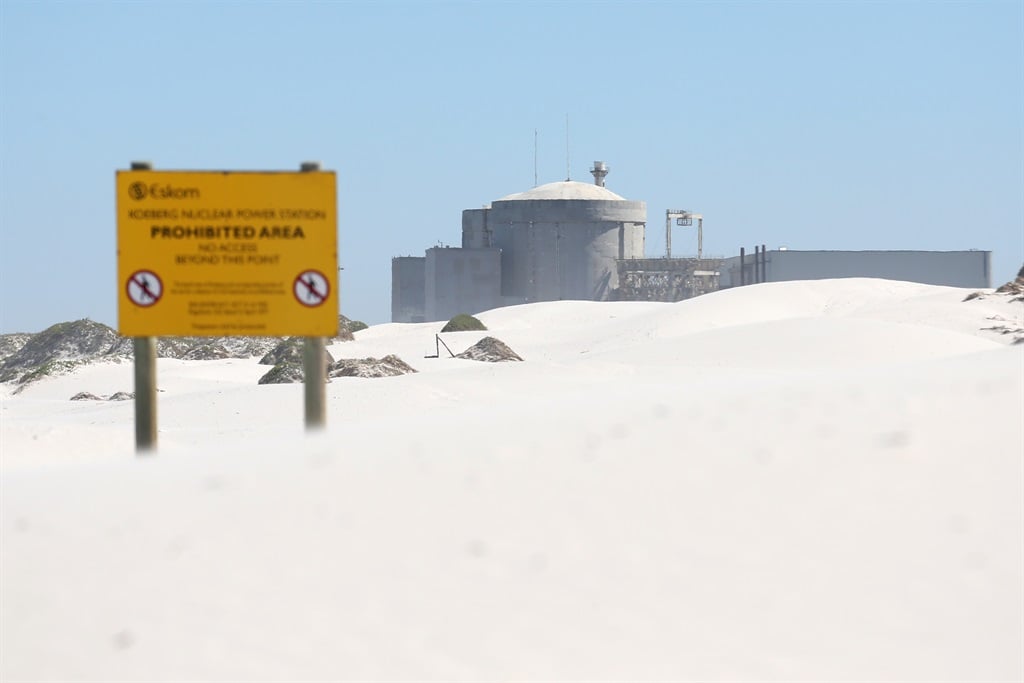
Eskom is "on track" to do everything that needs to be done to continue safely operating Koeberg beyond July 2024, says its acting chief nuclear officer Keith Featherstone.
Featherstone and other officials, including Eskom's chief operating officer Jan Oberholzer and acting head of generation Rhulani Mathebula, on Monday, briefed the media on the extent of the country's load shedding challenges.
The Koeberg nuclear power station was a topical point of discussion after News24 reported that a steam generator meant for Unit 1 had dropped in a factory in China. Eskom has to replace the six steam generators at Koeberg as part of the life extension programme of the power station. Five steam generators have been delivered to South Africa. The last one – the one that dropped – is still in China and is due for delivery by December.
During the briefing, Oberholzer indicated that the drop happened a year and a half ago, and all the repairs to it have been completed.
"The necessary quality control has taken place. We had specialist inspectors to look at it, and they have given it a clean bill of health," said Oberholzer.
Featherstone further added that the steam generator was on an assembly line and dropped by about a foot (or 30 centimetres) to the floor. The analyses, inspections and repair work that followed took some time, but the steam generator is acceptable for use, he explained. The steam generator is now undergoing its end-of-manufacturing inspections and tests before being shipped to Koeberg, he added.
In theory, if the delivery of the steam generator is delayed, Eskom has identified a steam generator meant for Unit 2 that can be fitted to Unit 1, explained Oberholzer.
Eskom's Unit 1 – which has been operating successfully for 300 days – is due to go offline on 8 December, and the last steam generator is scheduled to be in South Africa around 14 December, said Featherstone. The outage at Koeberg Unit 1 is scheduled to last 185 days, and during this period, the steam generators will be replaced, and other maintenance activities will be completed.
Koeberg's current operating licence from National Nuclear Regulator (NNR) expires in July 2024, and Eskom has applied for an extension for another 20 years. This is similar to what other similar nuclear utilities have done.
To extend the life of Koeberg, Eskom had to perform and complete a safety justification which was submitted to the NNR in July.
"We had not identified any conditions that we believe preclude Koeberg safely for another 20 years," said Featherstone.
It is now up for the regulator to decide if it agrees with Eskom's conclusions. The NNR will engage with the public before making a regulatory decision to issue an operational licence for another 20 years.
In its submission, Eskom also indicated minor modifications that need to be completed at the plant – to ensure the equipment is suitable to continue operating.
Featherstone said there is a risk of the licence not being issued:
It is possible for the regulator to issue two separate operating licences for each of the units, but Featherstone added that this is something for the NNR to determine.
Issues at Koeberg Unit 2, however, have contributed to the recent spate of load shedding. The unit went offline on Saturday, 3 September, when the reactor tripped due to an issue with a control rod. Oberholzer said that these trips are normal after a control rod replacement – which happened during the most recent outage for the unit.
Eskom says that tests are being performed on the control-rod system, and the results are being analysed in detail. "Once all the tests are completed, and all the measures to reduce the risk of further production impact have been assessed and implemented – the unit will be returned to operation," said Oberholzer.
Eskom will have a meeting with original equipment manufacturers Framatome of France, on Monday afternoon, about the matter. From this meeting, there will be an understanding of when the 920MW unit will return to service.
During the past week, Eskom lost about 42 generating units – or about 24 000MW. So far, 37 units have returned to service (about 22 000MW).

